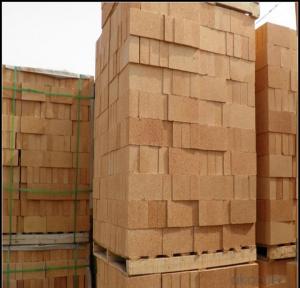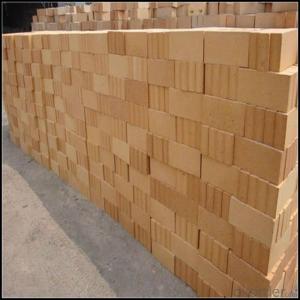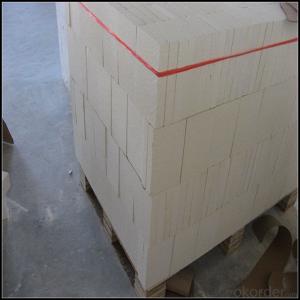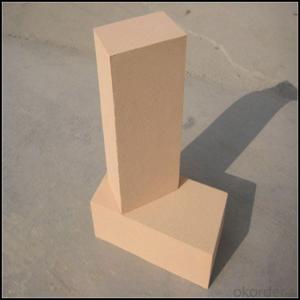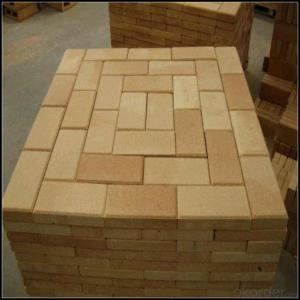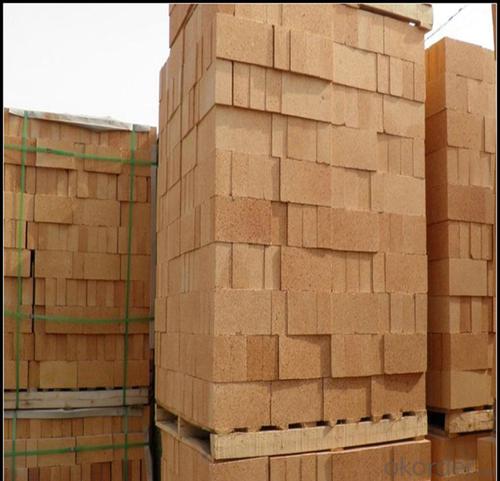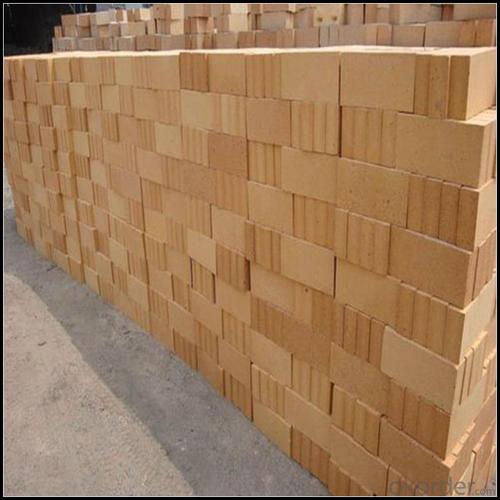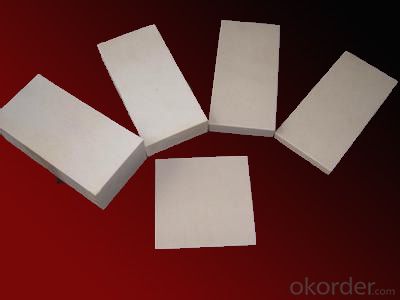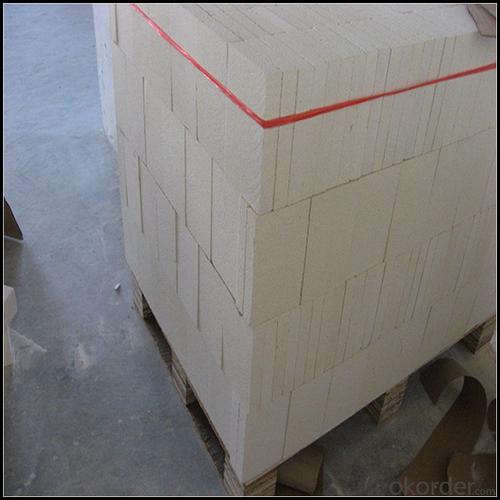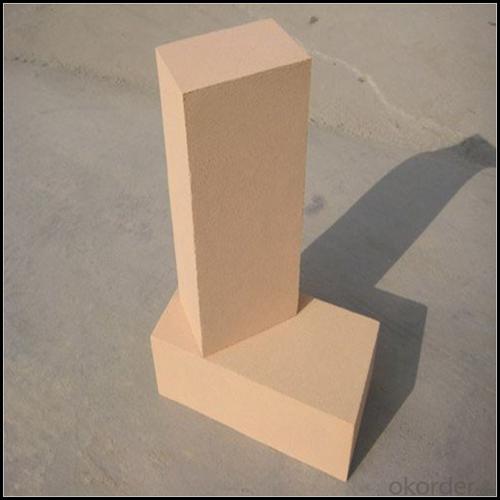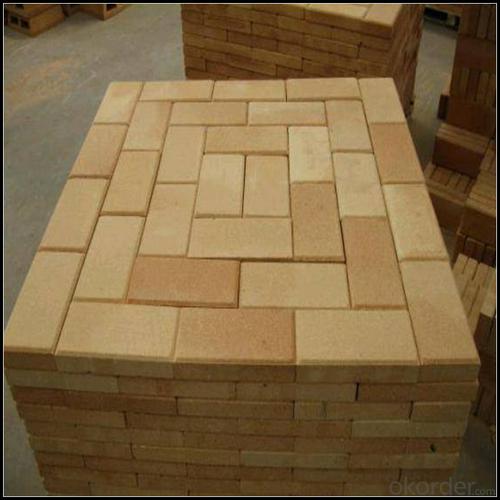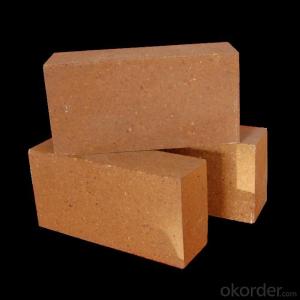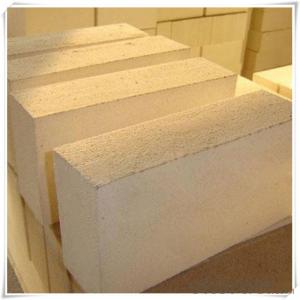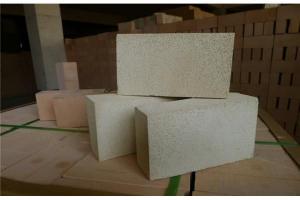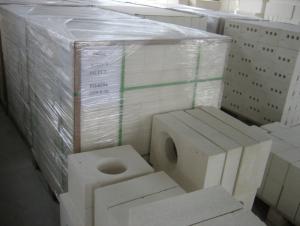Insulating Fire Brick for Glass, Steel Furnace, and Kilns
- Loading Port:
- China main port
- Payment Terms:
- TT OR LC
- Min Order Qty:
- 5 m.t
- Supply Capability:
- 800 m.t/month
OKorder Service Pledge
OKorder Financial Service
You Might Also Like
Refractory Brick
CMAX firebricks are classified under temperature between 1300℃ to 1700℃, manufactured from high purity alumina clay by mixing, press-forming, drying, sintering and machining. Bricks contain carefully-graded organic fillers which are burned out during sintering to give a uniform controllable pore structure. This technique makes product feature low thermal conductivity and excellent heat insulation
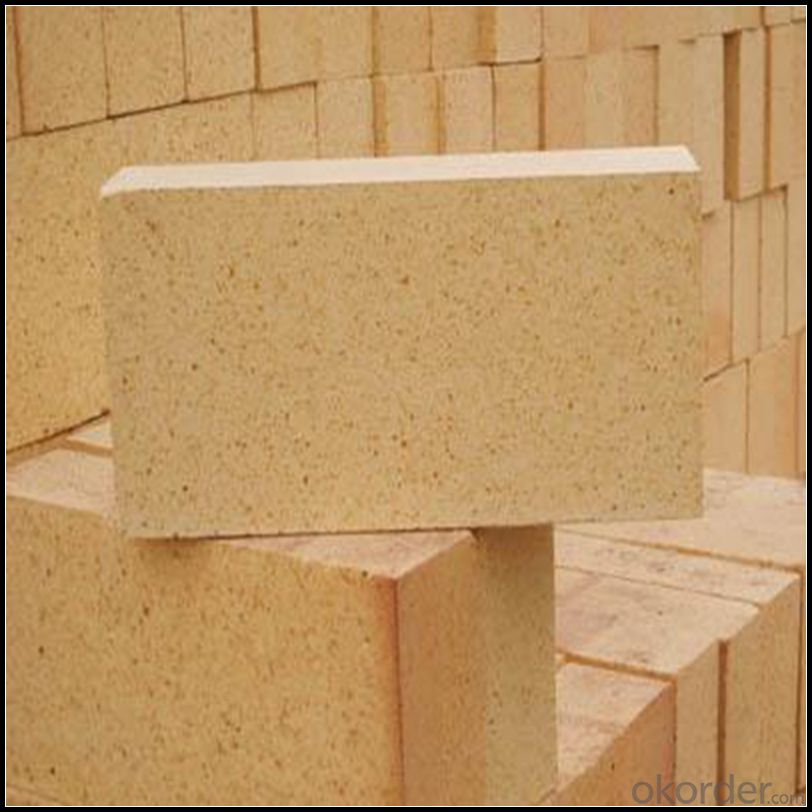
Features
a) Low thermal conductivity;
b) High refractoriness;
c) High mechanical strength;
d) Excellent thermal shock resistance;
e) Non standard sizes and shapes are available upon request.
Characteristices of high alumina brick
1. High intensity for pressure
2. Good thermal shock stability
3. Strong abrasion and corrosion resistance
4. High cold crushing strength
5. Excellent abrasion resistance at cold and hot conditions
Application
1.Building material industry,kiln,heating equipment and the inwall of high—temperature pipe line
2.Chemical industrial high temperature of reaction equipment inwall
3.Power plant ,gas turbine engine and heat insulation of unclear power
4.The fire proof of high—rise building
5.Furnace door of kiln
6.High-temperature filter material
Data Sheet
Classification Temperature (℉/℃) | 3000/1650 |
Bulk Density (g/cm3 ) | ≤1.0 |
Thermal Conductivity | |
800℃, W/m.K | ≤0.39 |
1000℃, W/m.K | ≤0.43 |
1200℃, W/m.K | ≤0.48 |
Reheating Linear Change (%) | 1550℃×12h |
≤0.9 | |
Chemical Composition (%) | |
Al2O3 | ≥75 |
Fe2O3 | ≤0.5 |
Packaging & Shipping
Packaging Details:Be packed in fumigated wooden pallets
Delivery Detail: 30 days after order
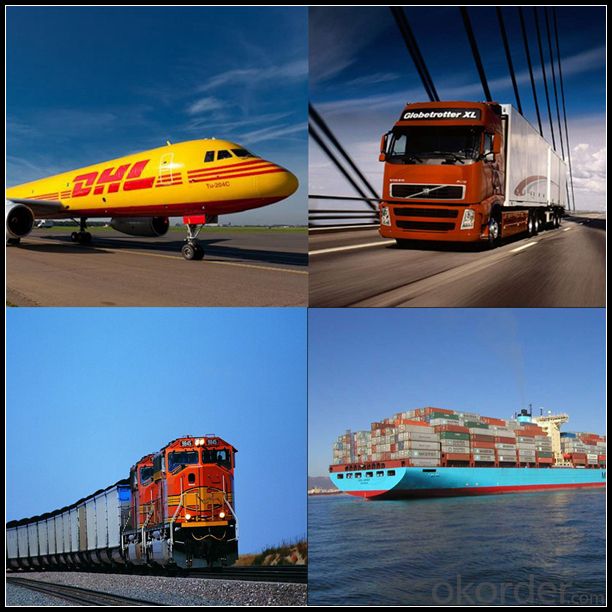
Our Services
Optimum solution and product supply of refractories for high temperature industries, such as iron steel, non-ferrous, petrochemical and building materials.
Engineering design, contract and consult for refractories, and civil architecture design.
Research, development, manufacture and sale of superhard materials.
R&D, manufacture and sale of special packing materials for export.
Inspection, supervision and arbitration of refractories.
Consultation and services in refractories information.
Training and cultivation of high-level talents in refractories profession
Sales Network

Company Information
CNBM (China National Building Material) Group is the largest comprehensive building materials group in China that in integrate scientific research, manufacturing and logistics into one entity. The largest building materials and equipment specialists in China. Upon State Council approval, today CNBM owned more than 300 subordinate manufacturing factories and servicing companies. There are 6 fully owned public listed companies and 11 partially owned with substantial shares public listed companies. In many of these fields, CNBM is playing the leading role in the building industry in the country.
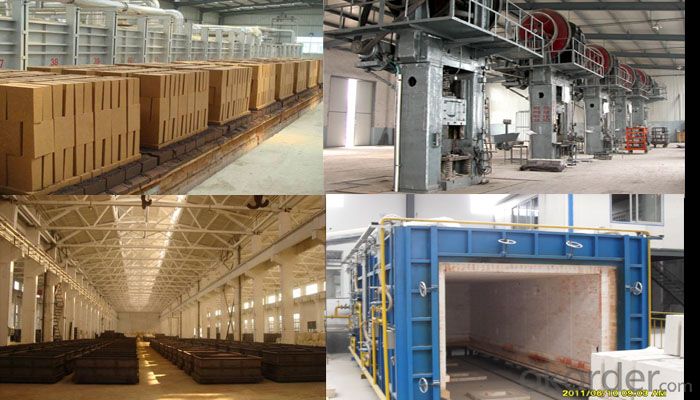
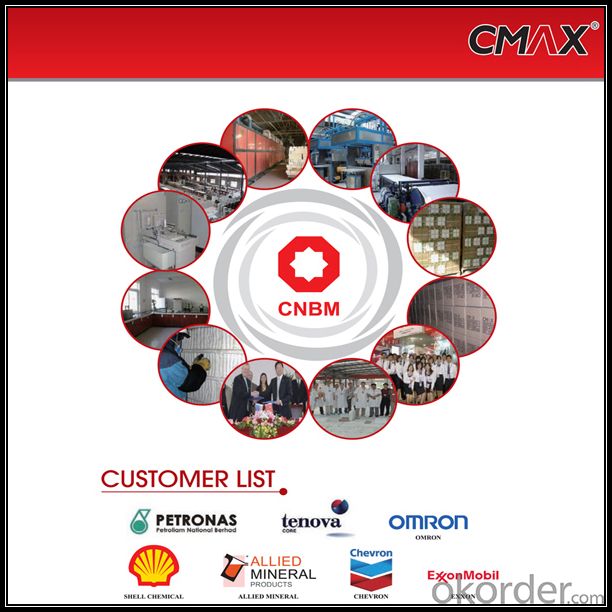
FAQ
1. Which products do you have?
We have all kinds of refractory brick, castable, mortar, cement, ceramic fiber products, etc.
Or you could browse our products to choose what you need.
2. Can you give me a brief introduction of the application of your products?
We are mainly specializing in the refractory materials in iron and steel, cement, glass, ceramics, petrochemical, electric power Industry, etc.
3. If I need your offer, what information do you need?
In order to choose suitable products, it will be appreciated to provide us the information, such us specification, technical data, order quantity, products application etc. If any question, please contact us freely.
- Q: The project cost in hydropower No.3 shaft wall is solid brick or insulating brick?
- From the structure principle, hydropower shaft with solid brick, is to consider the safety performance of the structure.
- Q: Are insulating fire bricks resistant to high-pressure environments?
- Insulating fire bricks, despite their excellent thermal insulation properties and high temperature resistance, are not explicitly engineered to endure high-pressure surroundings. Their capacity to withstand pressure is restricted. Generally, insulating fire bricks are employed in low-pressure scenarios where their insulation properties take precedence over their ability to endure pressure. If there is apprehension about a high-pressure environment, it is advisable to utilize alternative refractory bricks that are explicitly designed for such conditions, such as dense fire bricks or high-alumina bricks. These alternatives provide superior strength and pressure resistance.
- Q: Can insulating fire bricks be used for insulation in flues?
- Yes, insulating fire bricks can be used for insulation in flues. These bricks are designed to withstand high temperatures and provide excellent thermal insulation, making them suitable for lining and insulating flue systems. They help to prevent heat loss, improve energy efficiency, and enhance the overall performance of the flue.
- Q: Can insulating fire bricks be used as a lining for chimneys?
- Yes, insulating fire bricks can be used as a lining for chimneys. These bricks are designed to withstand high temperatures and provide insulation, making them suitable for lining chimneys and protecting them from heat damage.
- Q: How do insulating fire bricks affect heating or cooling times?
- The unique thermal properties of insulating fire bricks have a notable impact on the duration of heating or cooling. These bricks possess low thermal conductivity, making them highly effective in reducing heat transfer through conduction. When employed for heating purposes, insulating fire bricks contribute to the retention of heat for longer periods. They serve as a protective shield, impeding the easy escape of heat from the system and ensuring its directed flow towards the desired area. Consequently, the heating process becomes more efficient as the heat remains effectively contained within the system, without dissipating rapidly. As a result, heating times are shortened due to the assistance of insulating fire bricks in sustaining a consistent temperature and preventing heat loss. Similarly, in cooling applications, insulating fire bricks assist in slowing down the rate of heat transfer. By minimizing the entry of external heat into the cooling system, these bricks support the maintenance of lower temperatures over an extended duration. This is particularly advantageous in situations requiring a steady and controlled cooling process. Overall, the utilization of insulating fire bricks can significantly alter the duration of heating or cooling by enhancing energy efficiency. These bricks function as a thermal barrier, minimizing heat transfer and maximizing the effectiveness of heating or cooling systems.
- Q: Energy saving bricks or bricks?
- Energy saving brick may be cement slag, or cement, water residue, cement, coal ash, etc. overview
- Q: Can insulating fire bricks be used in foundries?
- Yes, insulating fire bricks can be used in foundries. They are commonly used as lining materials for various high-temperature applications, including foundries. Insulating fire bricks provide excellent thermal insulation, reducing heat loss and improving energy efficiency in the foundry process. Additionally, they have good resistance to thermal shock and can withstand the extreme temperatures and harsh conditions often found in foundry environments.
- Q: Can insulating fire bricks be used for insulation in chemical reactors?
- Yes, insulating fire bricks can be used for insulation in chemical reactors. Insulating fire bricks are made from lightweight materials such as vermiculite or perlite, which have excellent thermal insulation properties. These bricks are designed to withstand high temperatures and can provide insulation in a variety of applications, including chemical reactors. Chemical reactors often operate at elevated temperatures, and maintaining a stable temperature is crucial for efficient and safe operation. By using insulating fire bricks as insulation in chemical reactors, heat loss can be minimized, leading to better energy efficiency and cost savings. Additionally, insulating fire bricks can help to reduce the temperature gradient within the reactor, ensuring uniform heat distribution and enhancing the overall performance of the reactor. Furthermore, insulating fire bricks are resistant to chemical attack and can withstand the corrosive effects of various chemicals used in chemical reactions. This makes them suitable for use in chemical reactors where exposure to corrosive substances is common. In summary, insulating fire bricks are an excellent choice for insulation in chemical reactors. They provide superior thermal insulation, can withstand high temperatures, and are resistant to chemical attack. Using insulating fire bricks in chemical reactors can contribute to improved energy efficiency, temperature stability, and overall performance of the reactor.
- Q: Can insulating fire bricks be used in the construction of combustion flues?
- Insulating fire bricks are indeed suitable for the construction of combustion flues. Their high temperature resistance makes them perfect for environments that require heat resistance. Combustion flues face extreme heat and gases produced during combustion, but insulating fire bricks can safeguard the flue structure from intense heat and prevent heat loss. Furthermore, these bricks have low thermal conductivity, which effectively insulates and retains heat within the flue. As a result, the combustion process becomes more efficient, reducing energy waste. Ultimately, incorporating insulating fire bricks into the construction of combustion flues can enhance the safety, efficiency, and durability of the flue system.
- Q: Can insulating fire bricks be used in blast furnaces?
- Yes, insulating fire bricks can be used in blast furnaces. Insulating fire bricks are designed to withstand high temperatures and provide excellent thermal insulation, making them suitable for lining the walls of blast furnaces. Their insulation properties help to minimize heat loss and improve energy efficiency in the furnace, ultimately enhancing the overall performance and productivity of the blast furnace.
Send your message to us
Insulating Fire Brick for Glass, Steel Furnace, and Kilns
- Loading Port:
- China main port
- Payment Terms:
- TT OR LC
- Min Order Qty:
- 5 m.t
- Supply Capability:
- 800 m.t/month
OKorder Service Pledge
OKorder Financial Service
Similar products
Hot products
Hot Searches
Related keywords
